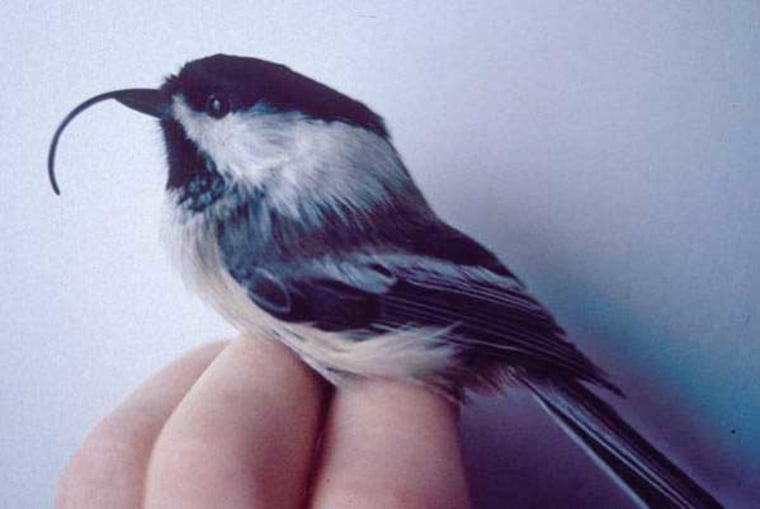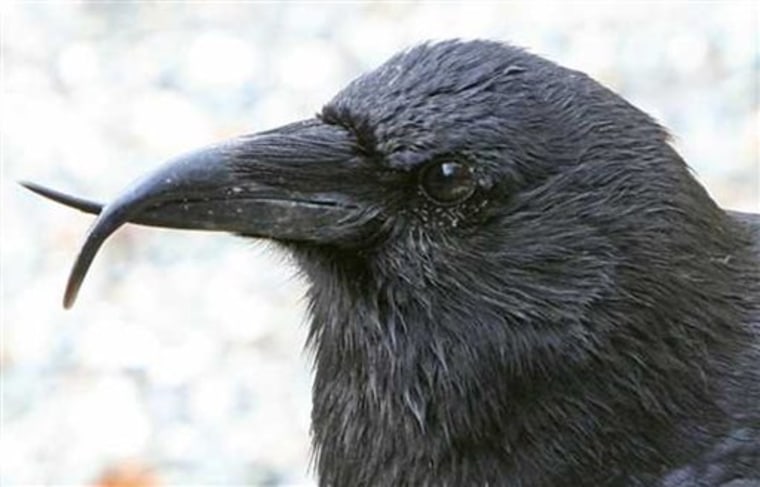The highest rate of beak abnormalities ever recorded in wild bird populations has been detected in Alaska and the Northwest, according to a new study.
"The prevalence of these strange deformities is more than 10 times what is normally expected in a wild bird population," said co-author and research biologist Colleen Handel.
The U.S. Geological Survey study on beak deformities in northwestern crows in Alaska, Washington and British Columbia follows a trend found earlier in Alaska's black-capped chickadees. The USGS said its experts would continue to look for the cause and further study the impacts.
Handel and wildlife biologist Caroline Van Hemert published their findings in The Auk, a Quarterly Journal of Ornithology. They captured Alaska crows in six coastal locations and used documented reports and photographs for birds elsewhere.
The cause of the deformity — called "avian keratin disorder" — hasn't been determined, Handel said. An estimated 17 percent of adult northwestern crows are affected by the disorder in coastal Alaska.

The keratin layer of the beak becomes overgrown, resulting in elongated and often crossed beaks. The deformity showed up in adults birds, most often in the upper beak but sometimes in the lower beak or both.
The abnormality — sometimes accompanied by elongated claws, abnormal skin or variations in feather color — impacts a bird's ability to feed and clean itself.
"We have seen effects not only on the birds’ survival rates, but also on their ability to reproduce and raise young," Handel said in a statement. "We are particularly concerned because we have not yet been able to determine the cause, despite testing for the most likely culprits."
Van Hemert said the disorder first was noticed in significant numbers around 1999. It has increased dramatically over the past decade, affecting 6.5 percent of adult black-capped chickadees in Alaska annually.
Biologists have documented more than 2,100 affected individuals and increasing numbers of other species, such as nuthatches and woodpeckers, have been spotted with beak deformities.
Both chickadees and northwestern crows live year-round in Alaska with generally restricted seasonal movements between wintering and breeding areas, but do not forage in the same areas, the researchers said.
"They're eating different things, they live in different habitat — crows are mostly intertidal, chickadees tend to be in birch forests — they're kind of occurring in different parts of their habitats and ecosystems and they're still affected by what seems to be the same problem," Van Hemert said.
The scientists said beak deformities can be caused by environmental contaminants, nutritional deficiencies, and bacterial, viral, fungal or parasitic infections.
In the past, large clusters of beak deformities have been associated with environmental pollutants such as organochlorines in the Great Lakes region and selenium from agricultural runoff in California.
The deformities affect birds' ability to feed, Van Hemert said, though many birds appear to cope by relying on food provided by humans at feeders rather than foraging.
Deformed beaks also can prevent adequate preening, she said, leaving feathers matted, dirty and without insulating value needed to survive the cold.
The increasing occurrence of deformities in multiple bird species with broad geographic distribution suggests that avian keratin disorder is spreading, they said.
